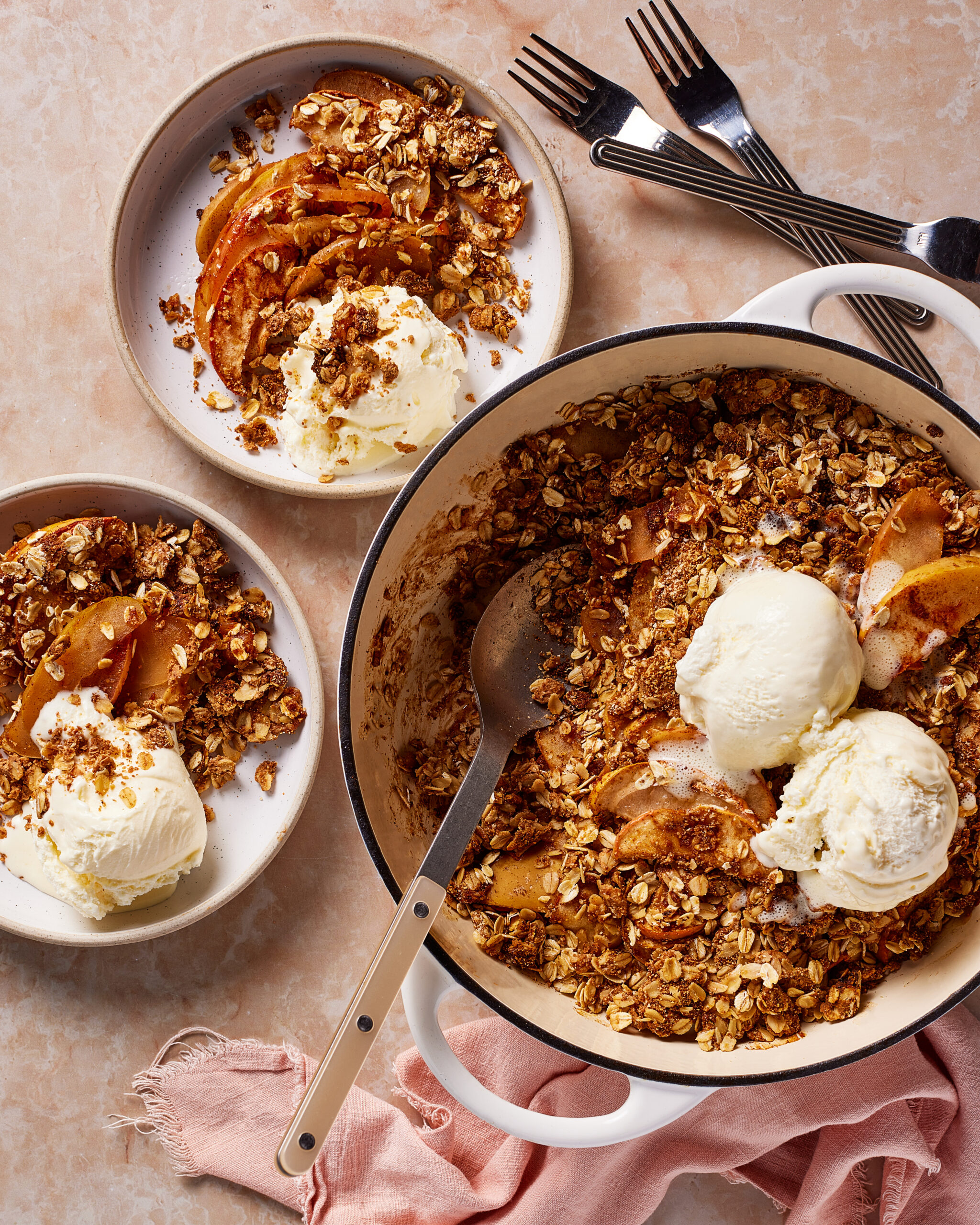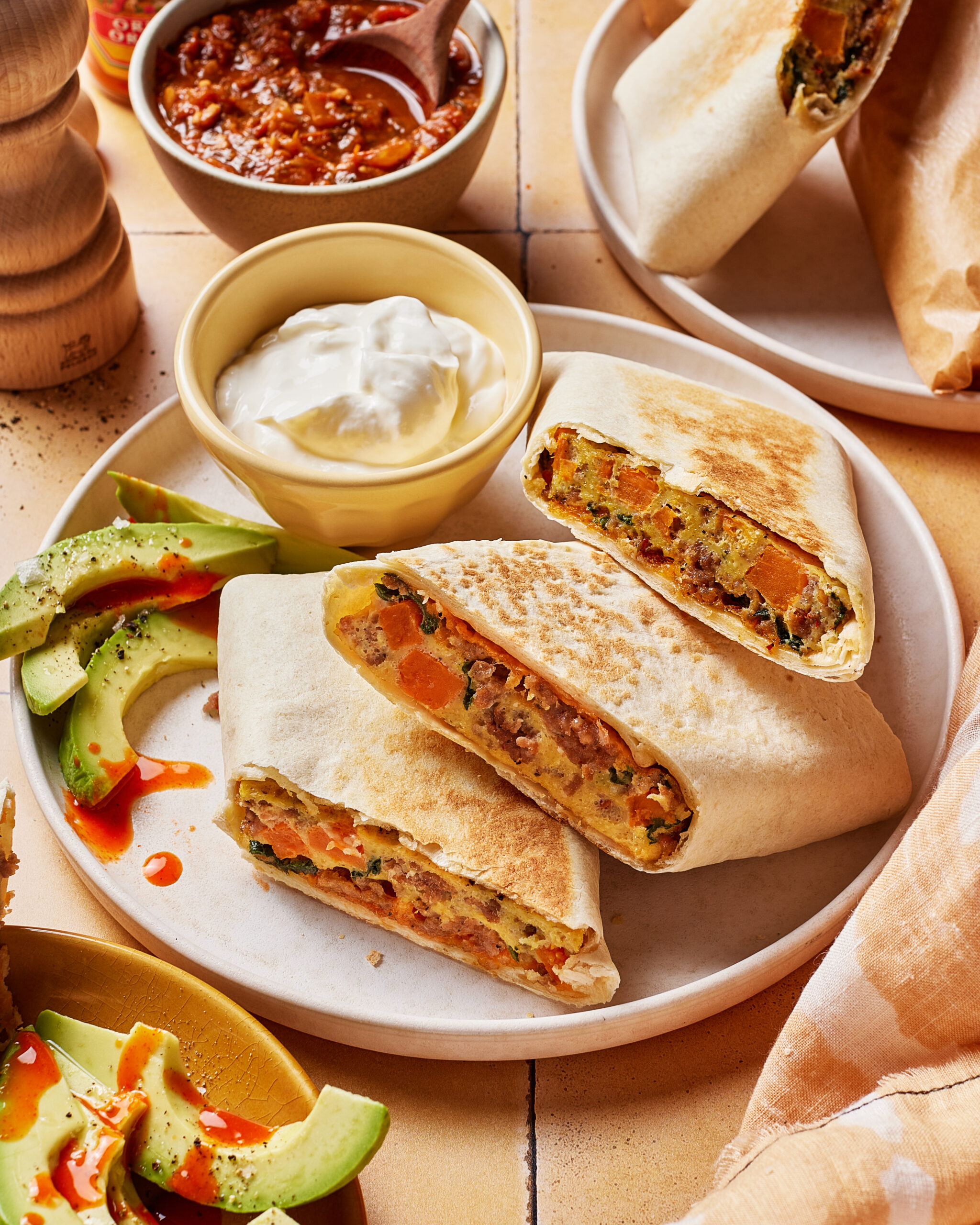recipes
lifestyle
wellness
motherhood
mindset
About
E-Books
Blog
Freebies
partnerships
hi, i'm lauren!
hey there!
I’m on a hot mission to help you balance your hormones & live your best life.
categories
Home
Quiz
Get In Touch
The Course
search:
Cookbook
Recipe key
GF
VG
P
Vegan
Gluten Free
Paleo
DF
Dairy-Free
download now
Join Hormone Healthy Eats!
Become a SFNSG insider to get my monthly Substack, Hormone Healthy Eats! Packed with the latest hormone-healthy recipes
+ tips.
jump to recipe >
Before I went back to school to study nutrition and hormone health, I was pretty much the poster child for awful periods (major bloating, painful cramping, fatigue, uncontrollable cravings and mood swings so intense my husband (then boyfriend) tracked my cycle for six months to prove that all of our fights happened right before my period (little did I know he was actually onto something!)
Thankfully, now that I understand the ins and outs of my menstrual cycle I am happy to report a relatively symptom-free menstrual phase.
Either way, I want you to know that while many of these menstrual phase symptoms are common, they are NOT normal, and it is totally possible for you to have a symptom-free period (and entire menstrual cycle) through simple nutrition and lifestyle modifications.
Starting today, with the most delicious menstrual phase foods and recipes to help you naturally balance your hormones and feel your best. Snag all of the details below!
NEED A CYCLE SYNCING PLAN WITH DELICIOUS RECIPES TO BALANCE HORMONES? CHECK OUT MY 28-DAY HORMONE BALANCE RESET PLAN.
WHAT IS THE MENSTRUAL PHASE?
The menstrual phase is one of the four phases of a menstrual cycle. It begins the first day of your period, and lasts approximately 3-7 days, when a quick drop in estrogen and progesterone triggers the shedding of the endometrium and bleeding begins. This happens when our body gets the signal an embryo has not been implanted in the uterus (aka we’re not pregnant) and therefore the cushy lining it prepared in preparation for a baby is no longer needed and breaks down as a result.
WHAT HAPPENS DURING YOUR MENSTRUAL PHASE
All of your sex hormones are at their lowest point during this phase, and with it your energy, libido and motivation. Biologically, this drop in hormones affects your brain and body in various ways, including a downshift in your immune system and heightened stress response (making you more susceptible to colds and burnout).
You also experience the greatest communication between your two brain hemispheres, the left analytical side and the right feeling side. This means you are best able to synthesize how you feel while also taking into account the facts.
Additionally, your body is working extra hard and losing nutrients with the loss of blood, making this an essential phase to rest and replenish, similar to the essence of the winter season.
COMMON SYMPTOMS OF HORMONE IMBALANCE IN YOUR MENSTRUAL PHASE
The hormonal and biological shifts mentioned above very much align with the winter season. Basically energy is low and you’re feeling ready to hunker down and hibernate, much like how we feel during the dark, short and cold days of winter. It’s not a time you often feel like going out, being social, engaging in intense physical activities or getting it on, rather getting on your coziest pjs, making a hot cocoa and spending time netflix and chillin’.
It’s totally normal to feel this way during menstruation, as well as experience some muscle contractions or minor cramping and physical sensations. What is not normal is experiencing uncomfortable, painful or debilitating symptoms, which are indicative of an underlying hormone imbalance. These symptoms include:
-
+ PAIN/ INTENSE MENSTRUAL CRAMPS
-
+ MENSTRUAL MIGRAINES OR HEADACHES
-
+ HEAVY MENSTRUAL FLOW
-
+ BLOOD CLOTS
-
+ BLOATING
-
+ EXTREME FATIGUE
-
+ SWOLLEN/TENDER BREASTS
-
+ SLEEP ISSUES/INSOMNIA
-
+ MOODINESS
-
+ DEPRESSION
-
+ ANXIETY
-
+ HOT FLASHES/NIGHT SWEATS
-
+ FREQUENT URINARY TRACT INFECTIONS
BENEFITS OF EATING FOR YOUR MENSTRUAL PHASE
Luckily, one of the best ways we can combat hormonal imbalances and symptoms during menstruation is through food, especially by consuming nutrient-dense foods that are deeply restorative to the blood and kidneys. When we do this, we naturally support healthy hormone levels, which can lead to benefits in the menstrual phase including:
-
+ MINIMIZED CRAMPING
-
+ STABLE ENERGY & MOOD
-
+ REDUCED BLOATING/WATER RETENTION
-
+ IMPROVED DIGESTION/GUT HEALTH
-
+ LESS PAINFUL PERIODS
-
+ OPTIMAL FERTILITY
-
+ BOOSTED IMMUNE SYSTEM
-
+ CYCLE REGULARITY
-
+ REGULATED MENSTRUAL FLOW
-
+ IMPROVED SLEEP QUALITY
-
+ LESS BREAKOUTS/HORMONAL ACNE
-
+ REDUCED SWELLING/BREAST TENDERNESS
BEST MENSTRUAL PHASE FOODS TO CONSUME
Due to the hormonal and biological fluctuations that take place during our menstrual phase, it’s important to consume plenty of nutrients that work to restore the blood and kidneys and optimize iron absorption, as well as those that lower inflammation and/or boost energy and mood. See below for specific nutrient requirements, as well as the foods rich in said nutrients. *You’ll notice many of these foods overlap in nutrient categories, with multiple benefits to consuming!*
+ IRON-RICH FOODS
Because your body is involved in an intense process of shedding the build up of the uterine lining, it’s especially important to focus on nutrient-dense foods that are rich in iron (especially heme, the most bioavailable form), which is deeply restorative to the blood and kidneys, such as:
-
+ Grass-Fed Red Meat (beef, bison, lamb)
-
+ Liver/Organ Meats
-
+ Fish (sardines, tuna, mackerel, haddock)
-
+ Shellfish (oysters, clams, mussels)
-
+ Tuna
-
+ Poultry (chicken, turkey)
-
+ Tofu
-
+ Legumes
+ VITAMIN C RICH FOODS
Vitamin C helps your body dissolve and absorb iron, especially from non-heme sources (i.e. plant-based) which are less bioavailable then heme sources (listed above). Bottomline, you want to be consuming vitamin c rich foods in tandem with those high in iron, *especially* if you’re not regularly eating meat and seafood.
-
+ Dark Colored Berries (cranberry, blackberry, blueberry)
-
+ Citrus
-
+ Bell Peppers
-
+ Papaya/Guava
-
+ Leafy Greens (kale, collard, mustard greens, spinach)
-
+ Broccoli
-
+ Brussels Sprouts
+ B VITAMIN RICH FOODS
B vitamins (especially b6 and b9) support optimal progesterone production (crucial to reduce pms prior to your period) and work to stabilize blood sugar levels, helping you avoid energy dips and cravings. Some optimal B vitamin rich foods for your menstrual phase include:
-
+ Buckwheat
-
+ Wild Rice
-
+ Wild Caught Salmon
-
+ Poultry
-
+ Tuna
-
+ Liver & Organ Meats
-
+ Mushrooms
-
+ Kidney Beans
-
+ Ricotta/Cottage Cheese
+ MINERAL RICH FOODS (magnesium, zinc, iron, etc.)
Minerals such as magnesium, zinc and iron are essential to maintain optimal hormone balance, working to combat symptoms such as cramping, headaches, dizziness, low energy, inflammation etc. Because we excrete these minerals with our uterine lining, it’s especially important to replenish them during this phase. Some optimal mineral-rich foods include:
-
+ Leafy Greens (such as collards, kale, mustard greens, watercress)
-
+ Sea Veggies (dulse, kombu, kelp, seaweed)
-
+ Nuts and Seeds (pumpkin, flaxseed, chestnuts, peanuts)
-
+ Legumes (kidney beans, adzuki beans)
-
+ Liver & Organ Meats
-
+ Bone Broth
-
+ Red Meat
-
+ Shellfish/Sardines
-
+ Cruciferous Vegetables (broccoli, kale, Brussels sprouts)
-
+ Dark Chocolate
+ HEALTHY FATS/OMEGA-3 RICH FOODS
Omega-3’s are a type of unsaturated fat that are considered highly anti-inflammatory and can help lower prostaglandins that can cause cramping/period pain. Additionally consuming enough healthy fats ensures your body has enough fuel to maintain energy throughout menstruation, which is a very energy-intensive phase. Optimal menstrual phase foods include:
-
+ Wild-Caught Salmon
-
+ White Fish (Cod, Halibut, Flounder)
-
+ Sardines
-
+ Pasture-Raised Eggs
-
+ Spirulina
-
+ Walnuts
-
+ Hemp Seeds
-
+ Chia Seeds
-
+ Flaxseed
+ ANTI-INFLAMMATORY HERBS & SPICES
Herbs and spices have been used in Traditional Chinese Medicine for over 2000 years (and are now clinically proven) to help reduce cramping, nausea, bloating, fatigue, and headaches, as well as boost immunity and digestion and promote cycle regularity. Optimal herbs and spices to incorporate in your menstrual phase include:
-
+ Nettle Leaf
-
+ Ginger
-
+ Turmeric
-
+ Red Raspberry Leaf
**If you’re looking for a one-stop shop herbal formula to help you combat pms and have a symptom-free cycle, check out my favorite (I’ve been using it for 3 years!) clinically proven custom herbal blend. Don’t forget to use code 15LAURENC to save.
MENSTRUAL PHASE EATING + DIET TIPS
+ FOCUS ON PROTEIN, ESPECIALLY FROM ANIMAL SOURCES
Protein is an essential structural component of all hormones, which means you have to consume sufficient protein to make enough hormones. While it’s important to eat enough throughout your entire menstrual cycle, I like to emphasize it during your period, as it will work to replenish lost minerals and stabilize blood sugar, helping your mood and energy levels stay balanced.
Studies have shown most women need a bare minimum of 90g-100g of protein per day, or around 30g per meal. Try focusing on adding in at least one heme-iron rich protein source at each meal (see list above for reference).
+ OPT FOR WARM, WELL COOKED FOODS
According to Traditional Chinese Medicine (TCM), your period is the coldest part of your cycle (think winter!) due to a slight drop in basal body temperature. Additionally, an increase in progesterone during your luteal phase (the phase right before your period) can also restrict blood flow, leading to coldness in your extremities. Focusing on warm, well-cooked foods (think soups, stews, casseroles, slow-cooker meals, etc.) will help to increase blood flow and circulation (which helps with cramping) and are also easier to digest and extract nutrients from during this time.
+ FOCUS ON ANTI-INFLAMMATORY FOODS
Anti-inflammatory foods such as dark-colored berries, leafy greens, cruciferous veggies and fish loaded with omega-3 fatty acids work to lower inflammation, thereby naturally reducing prostaglandins, which can lead to pain and heavy cramping.
+ EAT REGULARLY & OFTEN
Keeping steady, balanced blood sugar during our entire menstrual cycle helps reduce stress within the body. Less stress = lower cortisol levels = less inflammation = reduced prostaglandins = menstrual cramp relief. Aim for at least 3 balanced meals per day and 1-2 snacks if needed (or eating every 3-4 hours).
+ DON’T FORGET TO HYDRATE
Hydration is always important, but especially during your period, as it can help reduce symptoms like bloating, puffiness and menstrual migraines. I encourage adding trace minerals into your water to support optimal mineral balance and hydration, or using electrolyte packets (this is my favorite clean brand).
+ TRY SEED CYCLING
The practice of rotating four different seeds (pumpkin, flax, sesame and sunflower) between the first and second half of our cycle phases alleges to regulate our hormones, thereby helping to relieve PMS, reduce period pain, stimulate ovulation, increase fertility and support the body in healing conditions such as PCOS and endometriosis. You can learn more about seed cycling in this post.
+ ADD IN HERBAL SUPPORT
Incorporating traditional Chinese herbs into my cycle syncing protocol has been a GAME CHANGER in supporting my hormones and reducing uncomfortable symptoms. I love the simplicity of adding in healing herbal teas such as red raspberry leaf or ginger, as well as taking this custom herbal formula daily during my luteal phase (either in adrenal cocktails, hot cocoa or straight from the bottle). *Use code 15LAURENC to save 15% off your order.
BEST MENSTRUAL PHASE RECIPES + MEAL IDEAS
BEST MENSTRUAL PHASE BREAKFAST RECIPES
+ Easy Cinnamon Banana Blender Pancakes
+ Sheet Pan High Protein Breakfast Burritos
+ Cottage Cheese Protein Pancakes
+ Gut-Healthy Pumpkin Pie Overnight Oats
+ High Protein Cottage Cheese Egg Bake
+ Cottage Cheese Egg Bites with Sun Dried Tomatoes, Spinach + Feta
+ Peanut Butter + Banana Baked Oatmeal
+ Gut-Friendly Pumpkin Spice Blender Pancakes
+ Carrot Cake Baked Oatmeal + DF Cream Cheese Glaze
+ Maple Banana Walnut Baked Oatmeal
+ Seed Cycling Maple Cinnamon Granola
+ Creamy Quinoa Porridge + Quick Berry Compote
+ All Breakfast Recipes From Phase #1 of My Hormone Balance Reset Plan
BEST MENSTRUAL PHASE DINNER + LUNCH RECIPES
+ Tropical Teriyaki Ground Beef Bowls
+ Spicy Lamb Meatballs with Coconut Curry
+ Cozy Coconut Curry Chicken Stew
+ Bison Butternut Squash Chili (from the Free Fall Recipe Download)
+ Juicy Turkey Avocado Burgers
+ Grilled Lamb Burgers + Harissa Aioli
+ Gut-Friendly Paleo Butter Chicken
+ Grilled Chicken + Veggies with Chimichurri Sauce
+ Chicken Pesto + Goat Cheese Sweet Potato Pizza
+ Instant Pot BBQ Chicken Stuffed Sweet Potatoes
+ Pumpkin + Forbidden Rice Salad w/ Maple Tahini Dressing
+ Sheet Pan Chicken Nuggets + Sweet Potato Fries
+ Immunity Boosting Chicken Chickpea Noodle Soup
+ Gut-Friendly African Peanut + Sweet Potato Stew
+ Greek Chicken Quinoa Bowls (serve warm)
+ Slow Cooker Chicken Taco Soup
+ Healthy Loaded Sweet Potato Nachos
+ Avocado Curry + Chicken & Vegetables
+ Fajita Stuffed Sweet Potatoes
+ Cozy Cauliflower Bacon Chowder
+ Maple Roasted Delicata Squash Boats
+ Maple Soy Glazed Brussels Sprouts
+ Quinoa Risotto with Seared Scallops + Pesto
+ Easy + Cozy Beef Stew (Slow-Cooker + Stovetop Options) *see recipe below
+ All Dinner + Lunch Recipes From Phase #1 of my Hormone Balance Reset Plan
BEST MENSTRUAL PHASE DESSERT + SNACK RECIPES
+ Healthy Homemade Period Gummies
+ Flourless Chocolate Peanut Butter PMS Brownies
+ Gut-Healthy Bone Broth Hot Chocolate
+ Seed Cycling Dark Chocolate Truffles
+ Chocolate Peanut Butter Cup Fudge
+ Gluten-Free Pumpkin Chocolate Chip Bread
+ Gluten-Free Chocolate Chip Banana Bread
+ Pumpkin Peanut Butter Chocolate Chip Cookie Dough
+ Pumpkin Chocolate Chip Muffins
+ Healthy Turmeric Deviled Eggs
+ Dark Chocolate Chunk Nut Butter Balls
+ All dessert recipes from Phase #1 of the Hormone Balance Reset Plan
FOODS TO AVOID DURING YOUR MENSTRUAL PHASE
While I like to focus on adding in vs. taking away, limiting your intake of certain foods can work to support to hormones and therefore reduce uncomfortable symptoms. These are the top foods to limit/avoid during your menstrual phase, if possible.
+ CAFFEINE/ALCOHOL
Over consuming caffeine and alcohol impacts your hormones in a myriad of ways (burdening our liver, altering our gut microbiome, depleting micronutrients, destabilizing blood sugar), most often leading to imbalances such as estrogen dominance or adrenal dysfunction. If you can’t imagine giving either up (zero judgement here!) try to minimize/reduce your intake or experiment with swaps (half-caff, decaf, mocktails, etc.)
+ COLD/RAW FOODS
As mentioned above, your menstrual phase is considered the coldest part of your cycle, due to a drop in basal body temp and restricted blood flow. Cold or raw foods also take more energy expenditure to break down, leading to slower transit time and a decrease in bioavailability of nutrients, so try to limit these or make swaps when possible (i.e. smoothies for egg scrambles, salads for soup, etc.)
+ REFINED SUGAR/HIGH SODIUM PROCESSED FOODS
Over consumption of refined sugar and carbs (found in cereals, baked goods, desserts, etc.) as well as salty snacks (think packaged crackers, chips, etc.) have all been linked to symptoms of pms and dysmenorrhea (extremely painful, debilitating periods) in women due to their highly inflammatory effect. They also crowd out nutrient-rich foods like those listed above, which you need more of during this phase due to blood loss. Try swapping refined sugar for any of the dessert recipes listed above (hello flourless peanut butter pms brownies) or packaged snacks for homemade ones when possible.
+ SPICY FOODS
While every person has varying degrees of toleration for spicy foods, many women find eating extra spicy, hot or oily foods during their period leads to irritation and inflammation of the digestive tract, often resulting in symptoms such as diarrhea, nausea, cramping and burning sensations. If this is you, I encourage you to avoid spicy foods during your menstrual phase, and focus on more bland, warm and easy to digest foods.
BOTTOMLINE
One of the most effective ways we can support our hormones (thereby reducing uncomfortable symptoms) is through consuming a wide variety of nutrient-dense foods based on where we’re at in our menstrual cycle. I always encourage clients to start small, focusing on 1-2 shifts (i.e. eating more warm foods during your menstrual phase, switching ground turkey for beef in a recipe, etc.) to avoid feeling overwhelmed and continue adding in more from there. When in doubt, tune into your body and what feels good, and I think you’ll find you naturally crave foods ideal for each phase.
MORE CYCLE SYNCING RECIPES + TIPS
+ EATING FOR YOUR MENSTRUAL CYCLE: A CHART + GUIDE
+ THE BEST FOLLICULAR PHASE FOODS, RECIPES + TIPS
+ THE BEST LUTEAL PHASE FOODS, RECIPES + TIPS
This post contains affiliate links. We may receive a small commission for purchases made through these links. Thank you for your support!
Cozy Beef Stew *Slow Cooker + Stovetop Options
This beef stew is hearty, cozy, delicious and rich in nutrients that work to replenish minerals due to blood loss during your period. Try it in your slow cooker for convenience or stovetop if you prefer a more traditional style.
|
PREP TIME: |
TOTAL TIME: |
|
10 Mins |
05:10 Hours |
Author: Lauren Chambers
Servings: 6-8
Recipe Type: Entree, dinner, meal, soup, stew, slow cooker
Cuisine: American
Ingredients
- 2 tbsp avocado oil
- 2 lbs grass-fed beef chuck, fat trimmed and cut into one-inch chunks
- 1-2 tsp sea salt
- black pepper to taste
- 1 small yellow onion, diced
- 4 cloves garlic, minced
- 3 tbsp gluten-free flour, such as almond flour or arrowroot starch to make extra thick
- 2 tbsp tomato paste
- 1 cup dry red wine
- 2 cups carrots, peeled and thickly sliced into rounds
- 1 cup parsnips, peeled and thickly sliced into rounds
- 2 cups gold or yukon potatoes, peeled and cubed
- 4 cups beef bone broth
- 2 bay leaves
- 2 tbsp fresh rosemary
- 2 tbsp fresh thyme
- 1 cup frozen peas
- fresh flat-leaf parsley for topping
Instructions
STOVETOP INSTRUCTIONS:
- Add avocado oil to a large, stovetop pot or dutch oven over medium high heat on the stove. When oil is hot (almost smoking) add in the beef chuck pieces, sprinkle with 1 tsp sea salt and fresh ground pepper and sear until well browned, about 4 minutes per side (you may need to do this in 2-3 batches to avoid overcrowding, I also recommend using tongs to flip). Once beef is browned, transfer to a plate a set aside.
- Lower heat to medium and add the onion to the pot, sautéing until golden brown (approximately 5 minutes). After onions are browned, stir in the minced garlic, remaining tsp of sea salt, black pepper, flour or arrowroot starch and tomato paste and saute for 1-2 more minutes.
- Pour in the cup of dry red wine, stirring briskly and scraping the bottom of the pot for 2-3 minutes.
- Add in the veggies (carrots, parsnips, potatoes) and stir until well combined, then stir in the browned beef chunks and beef bone broth. Lastly, add in the fresh thyme, bay leaves and rosemary.
- Bring the stew to a rolling boil over high heat, then reduce to a simmer and cook for 30-45 minutes on the stove, until the potatoes are fork tender. Once tender, add in the frozen peas and simmer for another five minutes.
- Top with fresh flat-leaf parsley and serve with buttered toast or salad.
SLOW COOKER INSTRUCTIONS:
- Follow Steps 1-3 from the stovetop instructions above.
- Transfer the beef and garlic/onion/wine mixture to your slow cooker then stir in all veggies (except for peas), beef bone broth and herbs (bay leaves, rosemary, thyme).
- Cook on high for 4-5 hours, until the beef and potatoes are fork tender.
- Once potatoes are tender, stir in the frozen peas and let cook for 10-15 more minutes until they’re warmed through.
- Top with fresh flat-leaf parsley and serve with buttered bread or a simple side salad.
Notes
*This recipe makes a large portion, which I especially love for the menstrual phase as there are typically plenty of leftovers meaning less cooking and more time for rest. Simply store in airtight glass containers in the fridge for up to 5 days and reheat as needed,
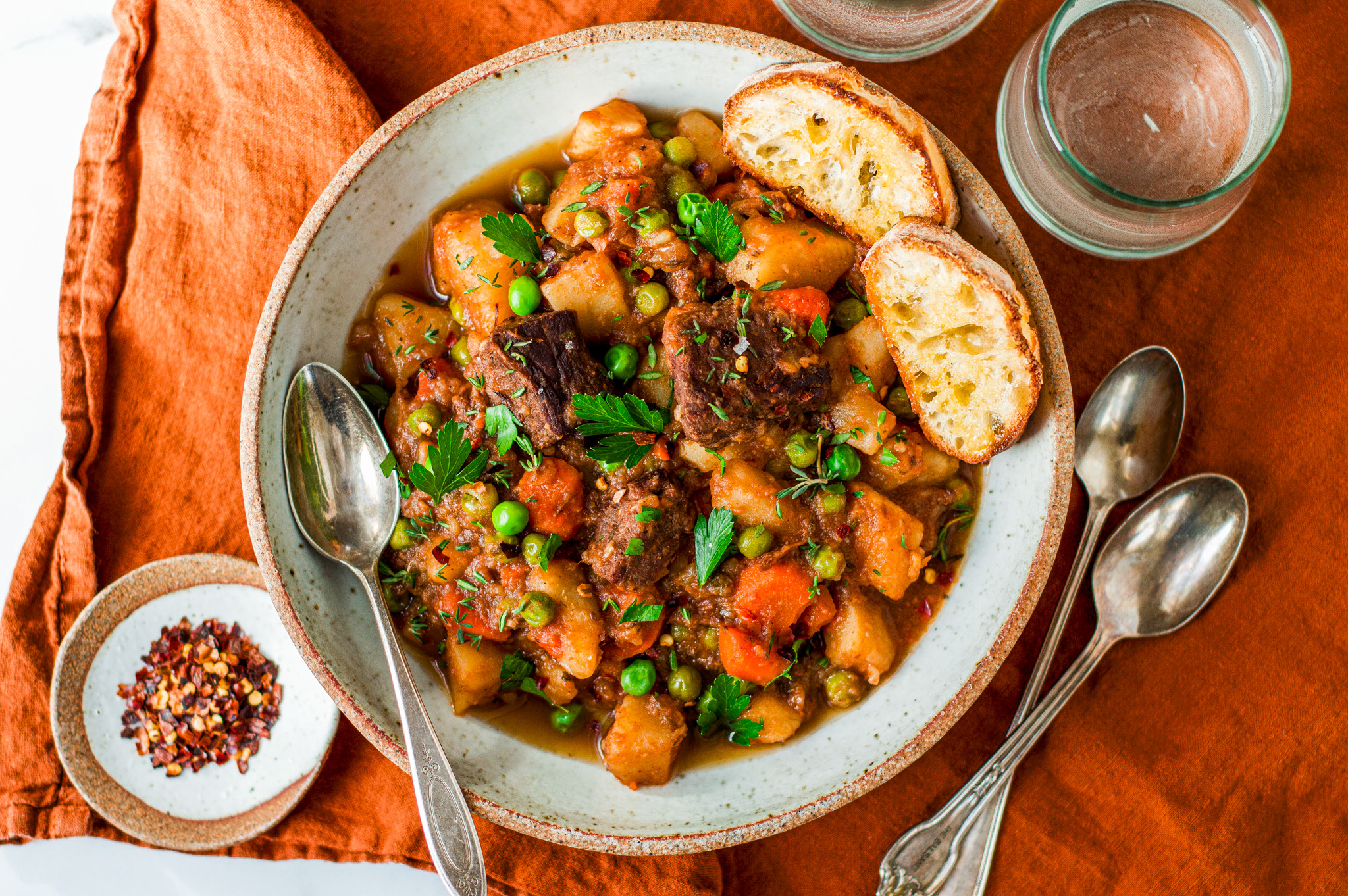
If you loved that...

01.
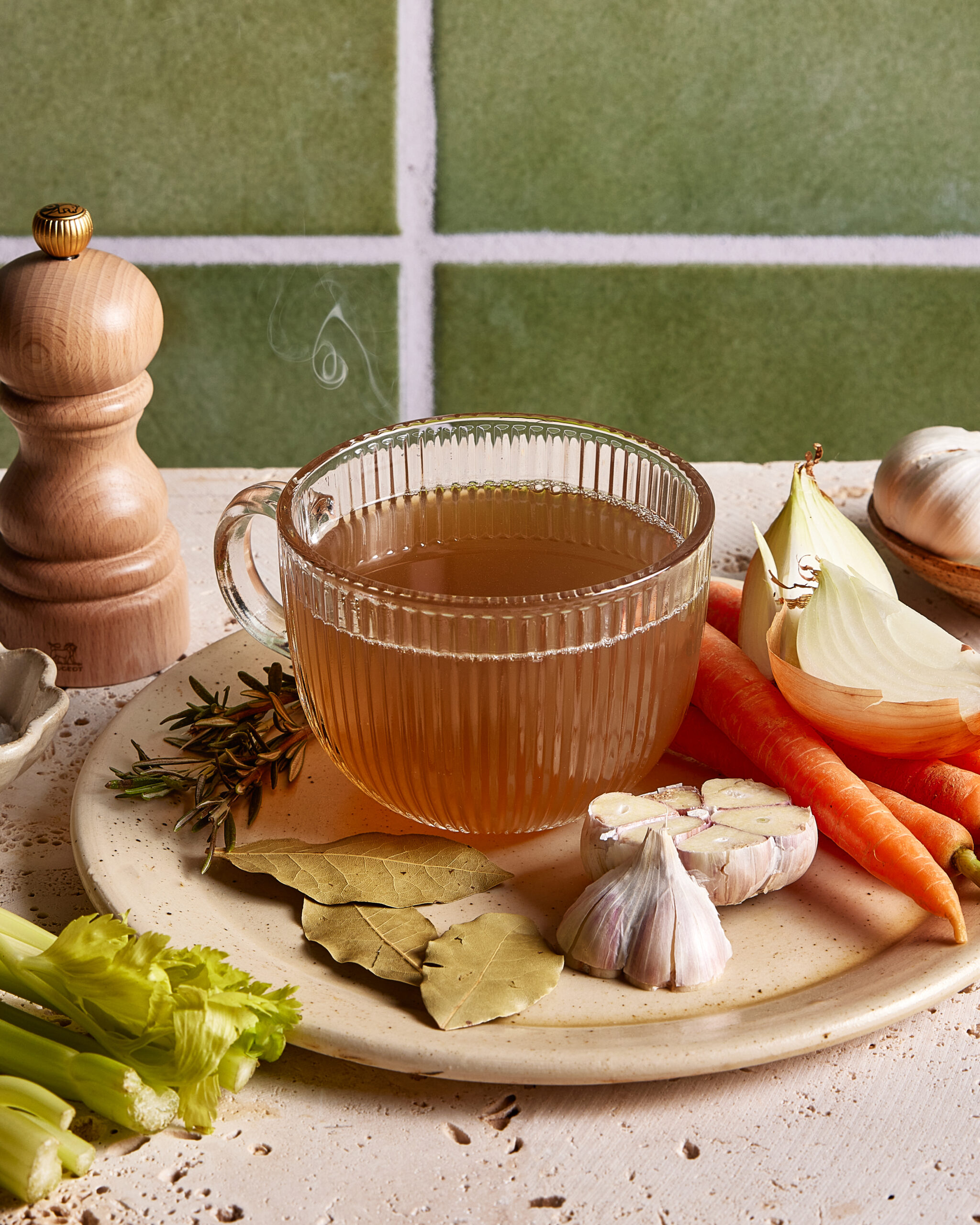
02.
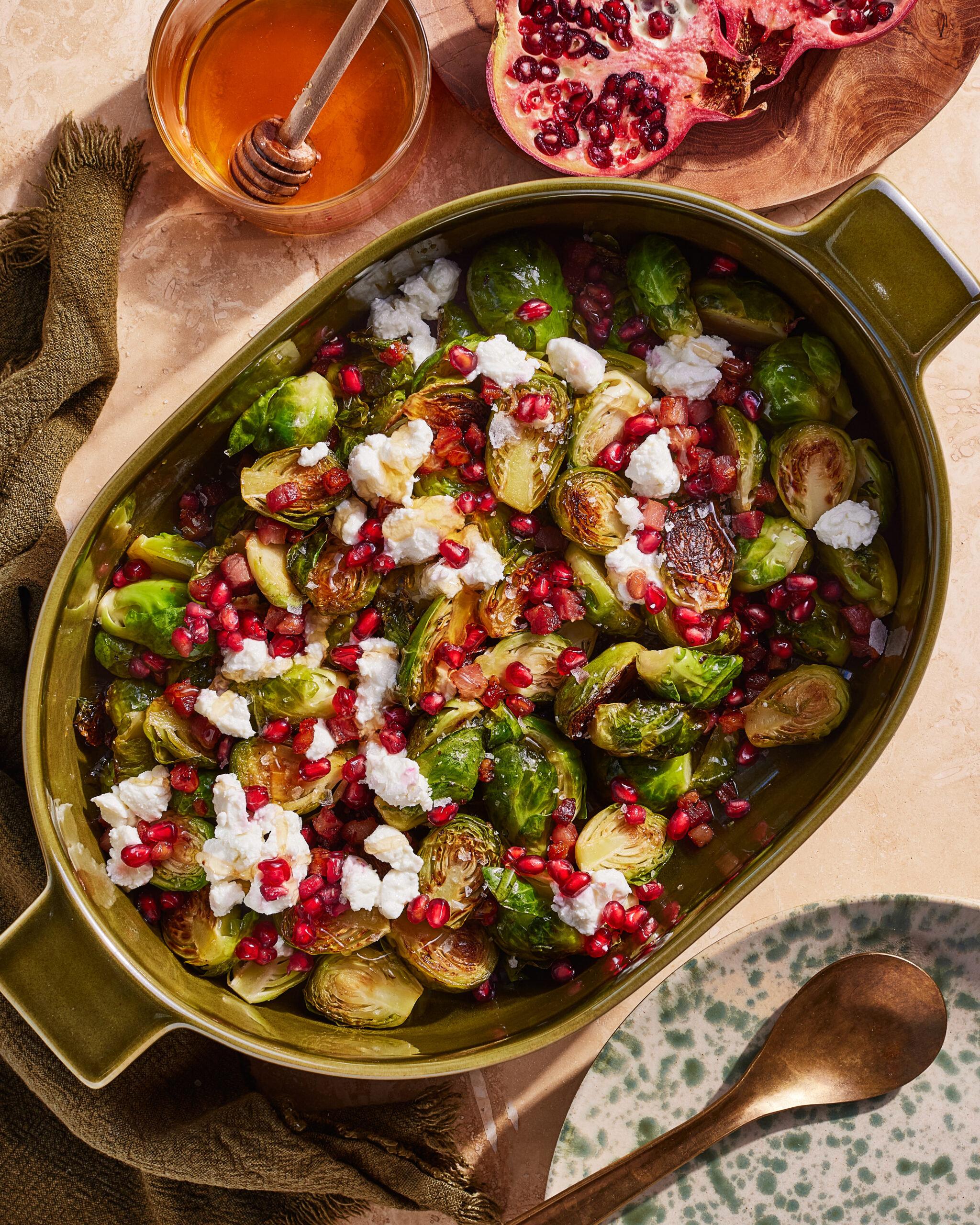
03.
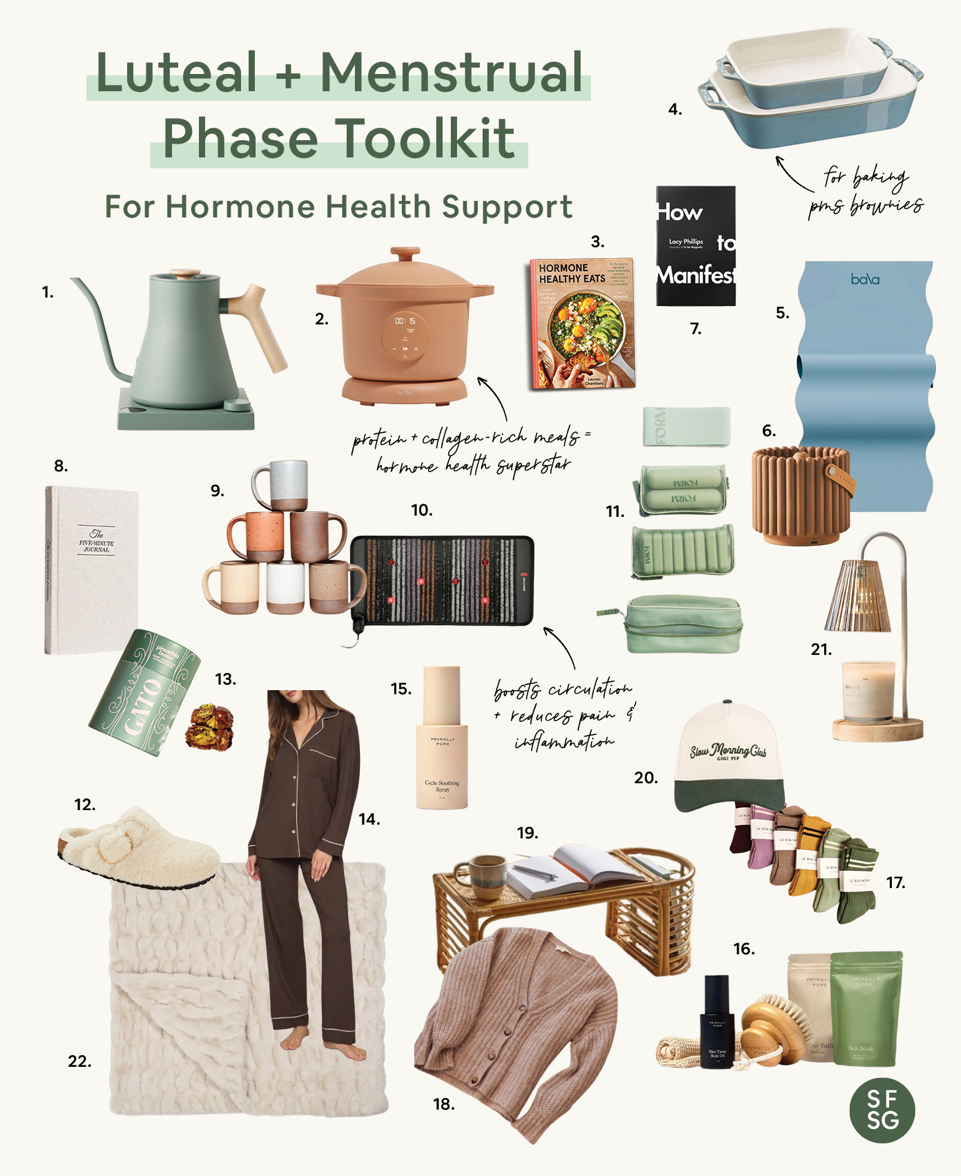
04.
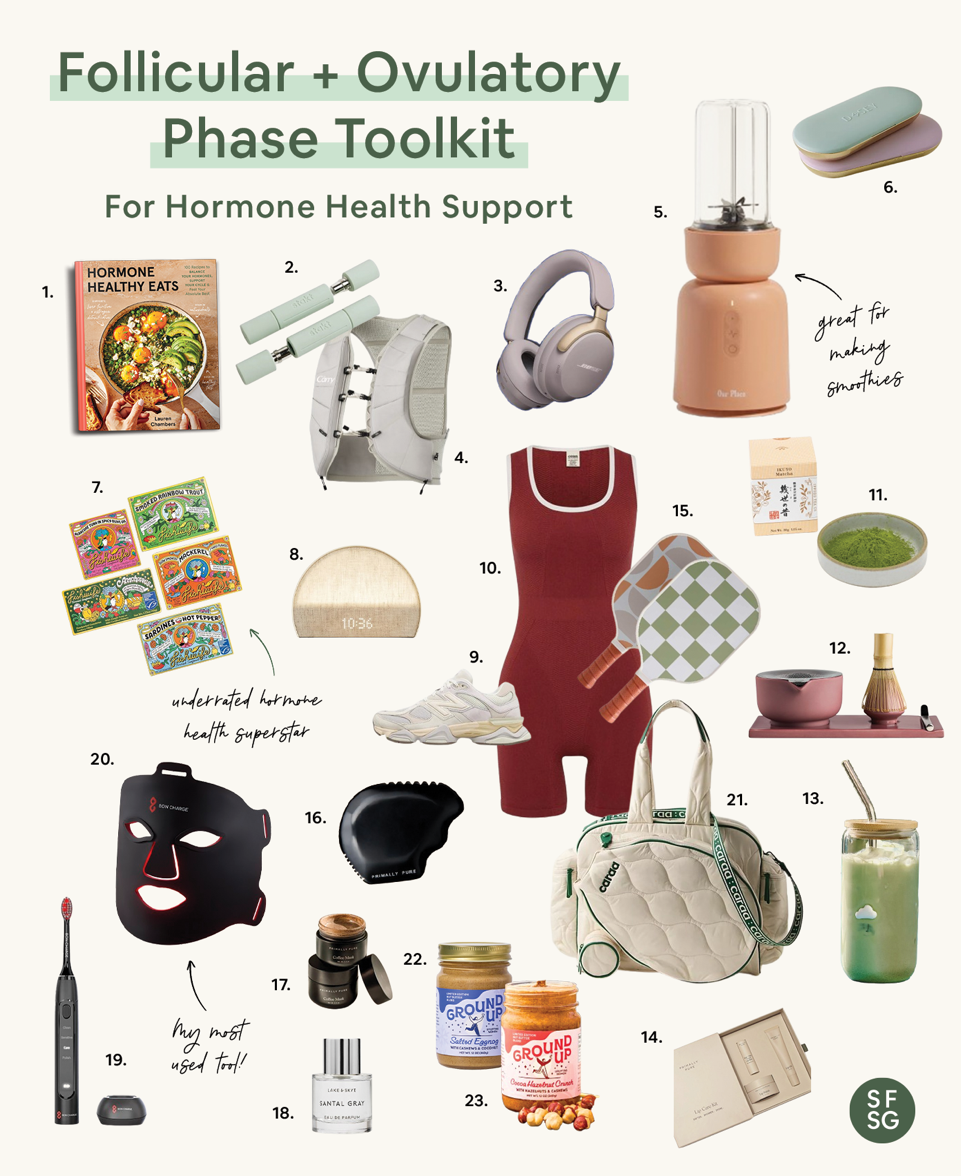
05.
hey!
Keep Browsing
Site
Keep Browsing
Site
the
about
e-books
blog
downloads
quiz
Welcome friend, I'm lauren.
I’m honored to support you on your journey to optimal hormone health + happiness. Thanks for being here babe.

